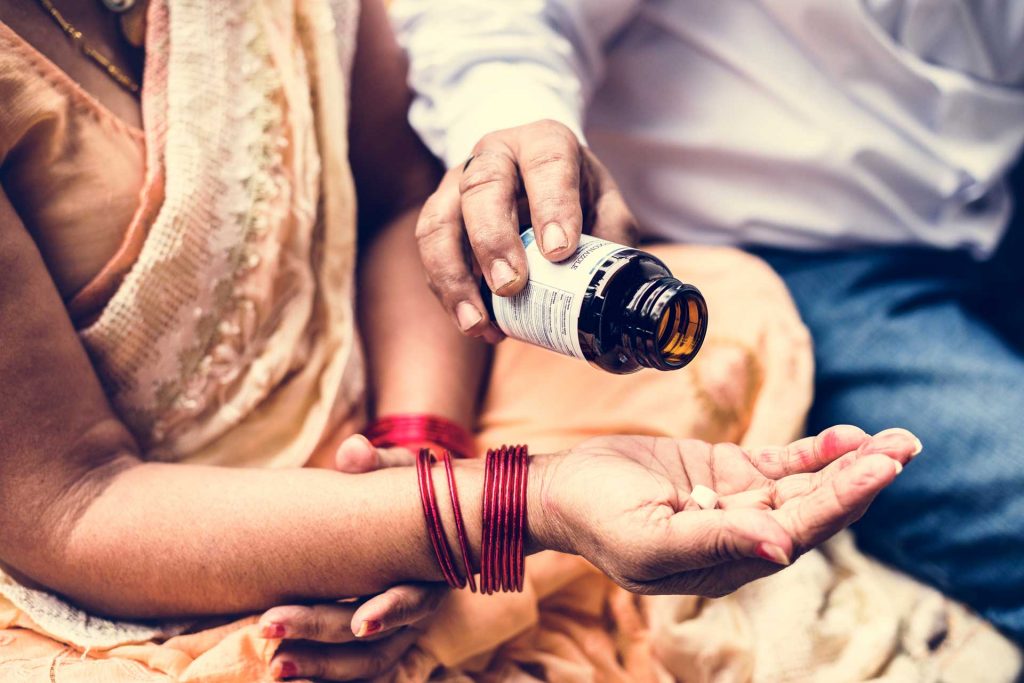Missions
Would you like to visit a mission hospital for a short period? Would you like to travel with a group and share our life in missions? You could enrich a mission with your expertise as well as learn lessons of life from friends in missions. You can become more aware of the healthcare needs of our country, especially the ‘Empowered Action Group States and Assam’ and the North East. Come let us all be involved!
EAG & Assam
Nine states of our country have been chosen for special empowerment by the Government of India. These states are Rajasthan, Uttar Pradesh, Uttarakhand, Madhya Pradesh, Chhattisgarh, Bihar, Jharkhand, Odisha, and Assam. (The northeastern states can be clubbed with Assam and they have not been included in the lists probably because of the lack of definitive statistical details).
These nine states have been named “Empowered Action Group States and Assam”. These states have been chosen for empowerment because of the very poor healthcare indices that these states have recorded, some even comparable to the indices existing in Sub-Saharan Africa.
In contrast, the southern states and Maharashtra have fared better. The Maternal Mortality Rate (MMR) of Kerala is 46 per Lakh whereas the MMR of Assam has been recorded to be 237 per Lakh1 – five times that of Kerala’s. The statistics for the North East are available for some states, but may not be a true reflection of the rural situation.
Maternal mortality is the pulse of the health care of a region. If the MMR is good, it generally means that the healthcare systems are likely to be good. If a poor, pregnant woman obstructs in labour at midnight after trying a home delivery, she needs to find transport to go to the nearest PHC. If she requires a caesarean section, she is likely to be referred to the Community Health Centre.
In many places of our country not only the CHC, but even district hospitals, will not take up an emergency caesarean section after evenings, even though there are trained personnel on duty. This may necessitate that she has to go to a state-level referral centre, which may be over a 100 km away. If she happens to be a tribal woman, living in the hills, often there may be only one outcome! In scenarios like this, urban and rural poverty are not comparable.
It is laudable that the government has identified the dire healthcare condition of these states and has taken many steps. The Ministry of Health and Family Welfare is monitoring the outcomes of interventions closely. Recently published data show an improvement in the indices in many of these states. For example, the MMR in Assam which was 300 per Lakh has reduced to 237 in two years. This is a good improvement.
However, there are certain factors to bear in mind. In a place like Chhattisgarh, which is 44% under forest, are the tribal people living in remote areas reporting maternal deaths? Are the improved statistics representative of these areas of dire need, or do they reflect better outcomes in the districts which are better developed? Further analyses need to be done to answer these questions. We will need to look at indices from those districts where the poor and the needy are concentrated.
Pregnancy is not a ‘disease’. It is a happy event, bringing a smile across our faces! It is sad when such a happy event leads to the death of the mother. Many of the causes of maternal death are preventable. But who will rise to the occasion to bring healthcare access to these poor, needy, and unreached of our land?
In addition, complicating the picture is social stratification. At the bottom are the so-called ‘lower castes’ who have been exploited for ages. All suffering common to man is amplified among the poor and in this lowest stratum of Indian society, it is so by enormous proportions.
Such a geographical inequality calls us to pause for a moment and consider if we should invest our lives in such a place where our impact will be maximum, both in bringing health in the now and health forever.
1Ministry of Health and Family Welfare Annual Report 2016-2018, Chapter 3 Maternal and Adolescent Health, P 35.
Graduates Mission Visits
You may have visited a mission hospital in your student days, or have missed doing so but always felt you should do it someday.
Graduates visiting missions, especially in groups, is very mutually useful. You can use your expertise and help upgrade some departments. You will return to tell students about our experiences first hand. It would also be a time when you could relieve some of the doctors, allowing them a long-overdue holiday with their families. In the evenings, you can spend time with the pioneers of the mission and develop new perspectives from their experiences. You will also be able to share your concerns. It may yet lead to something beautiful in our lives. A long association with the mission can be developed, and you may even be placed there one day! If you would like to go on such a trip, we can help connect you.
For more details, contact [email protected] or call us at +919444381492.
Check out our Event Calendar for the next ‘Graduate Mission Visit’.
India’s Health Scenario

One of our friends recounts this experience:
Serving as a young pioneer in a remote part of our country, he was called one night to attend a delivery. Those who came to help could not bring the lady in labour as they had to cross a river. The doctor and his team set out to cross the river in the middle of the night, rolling up their pants, with the needed instruments on their head. After an arduous journey, they reached the hut in which she lay. On entering the house, they were relieved to see that the baby was born and alive. The mother was propped up against the wall. But when they looked at her closely, she was dead!
India, our beautiful nation, is a land of extremes. On one hand, we see advances in healthcare that are on par with the rest of the world. On the other, there exist abysmal levels of nutrition and healthcare. The rich-poor divide is nowhere felt so acutely as in healthcare. People just die!
Complicating this picture is the spectre of caste. For the question, “Who are the poor?” in our country, there is but one answer: the Dalit and the tribal. If the one form here is a woman, then it gets much sadder, for such a woman is sadly in the category of the expendables. To be a girl child here is the worst of the lot. No wonder the MMR of the parts of the country where these brethren live is very high, comparable to some Sub-Saharan African countries.
The government is taking many good measures, but it reaches the grassroots in only a few states, and that too does not reach all people in a uniform manner. However, the health insurance schemes of the government have brought cheer to many in recent times. Issues of transportation, absenteeism of healthcare workers posted in marginalised areas of the country, red-tapism, and issues of integrity become hurdles for the succour to reach the ones who need it most.
Non-government healthcare can broadly be divided into Corporate Healthcare and the NGO effort including the Christian mission hospitals. Corporates are well-equipped, but the poor may not be able to access care there. The pressures of government regulations on one side and the pull of the corporate model on the other have influenced the missions to sway gradually towards the corporate model. The poor are therefore forced to go to government hospitals, but seeing the difficulties encountered, they tend to access healthcare from the cheaper and acceptable pharmacist and the quack.
There has been huge support in favour of AYUSH in spite of many expressing cautions. While the alternate systems should not be dismissed in entirety, there needs to be more discussion on this.
Medical education has become corporatised once again, and private players have escalated the costs. They also find ways to walk around government regulations in the fees. NEET has dealt a big blow to the students from villages. How can they compete with those starting NEET training in cities as early as 8th grade! Caste is also making a comeback in colleges and hostels, and there is a subtle shift in policies to do away with or dilute the social justice of reservations.
While we rejoice in the advancements made in healthcare and its access in the country, we have a broad choice before us. Either we get involved in streams and systems of healthcare which will make a change for the poor, or we choose the status quo. Being involved can mean many things from the frontline to ‘rope holding’ and support. But is it negotiable whether we should be involved or not? Following the one who walked the Galilee, do we have a choice?




